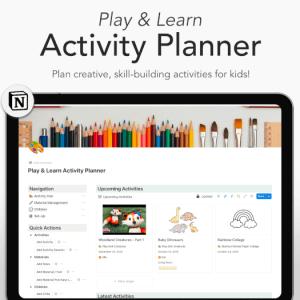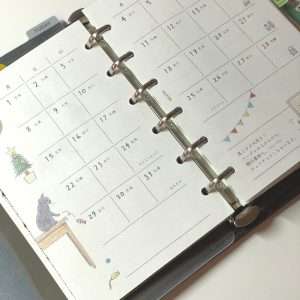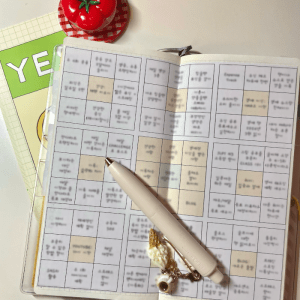Start a Miracle Morning Routine: My Honest Journey
When I decided to start a Miracle Morning routine, I honestly thought it would be easy—and maybe not that helpful. I was a new mom, constantly juggling work, home responsibilities, and a deep sense of losing myself. I had always considered myself someone with many interests—reading, gaming, knitting, self-care—but after my child was born, those parts of me disappeared almost overnight.
In this post, I want to share how I discovered the concept of the Miracle Morning, why I decided to try it, and what the early days really looked like. This isn’t a “how-to” guide. It’s an honest look at my journey—messy, imperfect, but deeply transformative.
Table of Contents
What Is the Miracle Morning?
The Miracle Morning is a concept introduced by Hal Elrod in his book of the same name. It’s a simple but powerful idea: wake up early and dedicate the first hour of your day to intentional personal development.
Elrod proposes six practices—called the Life S.A.V.E.R.S.—to include in your morning routine:
- Silence (meditation or prayer)
- Affirmations
- Visualization
- Exercise
- Reading
- Scribing (journaling or writing)
It’s not about doing all six perfectly every morning, but about creating a quiet, purposeful start to your day before the world wakes up. When I first heard of it, I was skeptical—but intrigued.
Why I Needed a Change
After becoming a mom, my life started revolving around everything and everyone except myself. Between work, childcare, and housework, I found that all of my hobbies and rituals that used to recharge me were gone.
I used to love painting my nails while watching YouTube on a Sunday night. Finishing a whole book in one sitting? That was my idea of a perfect day. Late nights often meant playing Zelda on my Switch or hosting board game nights with friends. Knitting and crafting were also part of the list—honestly, if someone told me to “spend the day doing what you love,” I’d have too many ideas. And yet, at this stage in my life, I couldn’t do a single one of them.
It wasn’t just about hobbies. I had always been a fragile-bodied person, so daily workouts were essential for me. But even doing ten minutes of light movement felt impossible.
At some point, I realized this wasn’t just about being busy. I had been blaming motherhood, work, or lack of time, but deep down I felt like maybe I was just getting too old to start anything new. And that’s when it hit me—no, I wasn’t too old. I was just living without room for myself.
So I decided I had to reclaim that space. Not all at once, but even if it meant carving out 20 or 30 minutes at the start of my day. Around this time, I came across The Miracle Morning book—and it clicked.
My First Month: Expectation vs. Reality
I thought I would adjust easily since I usually woke up around 7 a.m. anyway. I enthusiastically wrote down a long list of all the things I wanted to do at 5 a.m.—journaling, reading, meditating, exercising, even studying.
But I quickly hit a wall.
If I had worked late the night before, there was no way I could get up on time. If I was sick or even just tired, I’d sit at my desk in silence, doing nothing. I felt discouraged. I had all these plans and goals, but I couldn’t execute them. Honestly, it felt worse than doing nothing at all.
And yet—there was one thing I kept coming back to: the silence. The house was quiet. The world outside was still dark. All I could hear was the sound of me moving around slowly, making tea or stretching in the dark. There was something sacred in that stillness. It made me want to try again.
So I scaled back. I stripped my list down to one thing: drawing.
When It Finally Started to Work
I don’t consider myself particularly good at drawing, but I’ve always loved it. And yes—I even love the smell of colored pencils. I signed up for an online drawing class (via Class101), something I’d wanted to do for a while but had never “found time” for.

I also set two alarms—one at 5:00 a.m. and another at 5:10 a.m. Somehow, that small change worked. Instead of forcing myself up, I started waking up naturally with a sense of purpose. “Let’s brush my teeth quickly and start the class!” That shift—from I have to wake up to I want to wake up—made all the difference.
Winter mornings were (and still are) the hardest for me. I get cold easily and hate leaving the warmth of bed. But I put a small heater near my desk. My only goal became: get out of bed and turn on the heater. It sounds silly, but it worked.
The Night Before: Quiet Prep for a Quieter Morning
There were two key things I started doing at night to make the next morning easier.
First, I always cleaned my desk before going to bed. That small act made waking up feel exciting instead of overwhelming. I didn’t have to spend my precious quiet time tidying—I could jump right into what I loved.
Second, I cut off coffee after noon. I used to drink two cups a day—one in the morning and one around 2 or 3 p.m. I wasn’t even sure caffeine affected my sleep much, but just in case, I started switching to decaf. A few months later, I stopped drinking afternoon coffee altogether.
I also realized I needed to create some mental boundaries around work. I couldn’t completely avoid tasks after hours, but I started checking in before 5 p.m. if any requests coming in later could wait until the next day. Of course, truly urgent tasks still meant working late—but simply asking helped reduce the chaos. It made things clearer for both sides, and over time, those late-night messages became less frequent.
Family and Distractions
People sometimes ask me if I was worried about waking up the family. Honestly, not really.
My husband has a different sleep rhythm and doesn’t wake up easily. I use the bathroom in the living room to avoid making noise. My child also has a fairly stable sleep pattern and rarely wakes up during my early routine. On the rare occasion they did, I calmly explained what I was doing—and surprisingly, they waited for me to finish. (More on that in another post.)
Eventually, I became more forgiving on days I skipped. If my child was sick or I had stayed up too late, I gave myself grace. Skipping wasn’t a failure—it was part of a sustainable rhythm.
Finding Joy Again
Looking back, those first 1–2 months were all about finding a routine that made me want to get out of bed. I experimented a lot. I replaced drawing with journaling. Then added a bit of stretching. I even studied for the JLPT exam during Miracle Morning time—and yes, I passed the N1 last year. Now, I’m enjoying Japanese content more freely.
It took trial and error. But the most important thing I learned was this: your Miracle Morning doesn’t need to be perfect. It just needs to be yours.
Reflections on My Miracle Morning Journey
I didn’t think I’d still be doing this three years later. I didn’t expect a couple of hours a day to restore so much of what I thought I’d lost—my energy, my creativity, my identity.
In my next post, I’ll show you how I built my current routine and what my mornings look like now—more realistic, more grounded, and more joyful.
Until then, I hope my honest journey helps you feel like you’re not alone if you’re just starting—or starting again.
🕒 Must-Try Productivity & Time Management Tips
- Free Mandala Chart Template for Your New Year Goals
- Time Tracker for Hobonichi Weeks & A6 (Free Download)
- JLPT Study Planner with Hobonichi: Timeline and Layout Tips
- Morning Routine for Productivity: How I Start and End My Day
- Best Hobonichi Week Layouts for Study
Want to manage your time better and stay productive? Explore practical tips and simple time-saving strategies: Browse All Productivity Tips
💆♀️ Must-Try Mental Health & Mindfulness Practices
- Morning Routine for Productivity: How I Start and End My Day
- How to Reduce Social Media Time and Regain Control of Your Life
- Best Hobonichi Weeks Layout Ideas for Your Needs
- Brain Dump Technique: Simple Steps to Organize Thoughts
- My Favorite To-Do List App—and How to Make the Most of It
Want to reduce stress and gain mental clarity? Explore mindfulness practices, journaling techniques, and simple self-care habits: Browse All Mental Health Tips




















